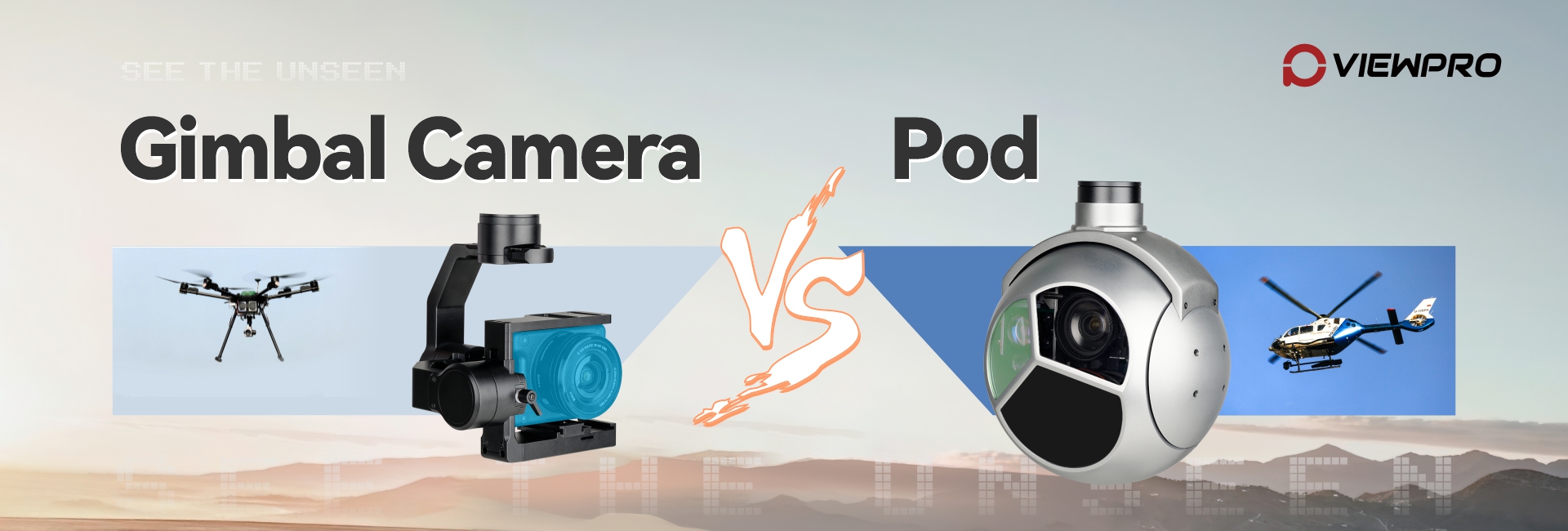Industry news
What are the Differences Between Gimbal Camera and Pod?
2024-11-07 15:34:52

What's the difference between gimbal camera and pod? According to traditional view of industry, here are the differences:
|
Feature
|
Gimbal Camera
|
Pod
|
|
Core Functionality
|
Provides camera stabilization to reduce vibration and shake
|
Integrates multiple devices (e.g., cameras, sensors) for stable shooting and multi-task execution
|
|
Design
|
Typically separate camera and gimbal system, simple and portable
|
An integrated, sealed/semi-sealed unit, often containing multiple sensors and cameras
|
|
Stability
|
Primarily relies on the gimbal system to provide three-axis stabilization
|
The pod provides more comprehensive stability, possibly incorporating additional sensors and adaptive systems
|
|
Application Scenarios
|
Drones, handheld devices, film production, commercial drones, etc.
|
Military, law enforcement, aerial reconnaissance, high-end film production, long-duration surveillance tasks, etc.
|
|
Portability
|
Lightweight and portable, adaptable to a variety of platforms and environments
|
Typically bulkier and fixed to aircraft or other platforms
|
|
Functionality
|
Primarily offers camera stabilization, with some models featuring additional functions (e.g., tracking, angle adjustment)
|
Integrates various sensors and task execution systems, offering features like tracking, targeting, and thermal imaging
|
|
Price & Complexity
|
Relatively simple and cost-effective
|
More complex, generally more expensive, with a wide range of functions
|
Summary:
Gimbal Camera: Gimbal cameras are primarily designed to provide stabilization for the camera, ensuring smooth and clear footage. Their portability and versatility make them suitable for various platforms, such as drones, handheld devices, and film production. Common terms include Gimbal Camera or Stabilized Camera.
Pod: Pods not only include cameras and gimbal systems but also integrate multiple sensors (such as thermal imaging, radar, etc.), capable of performing a variety of tasks like target tracking, aiming, and environmental monitoring. Pods are widely used in high-end fields such as military, law enforcement, and aerial reconnaissance, and are typically mounted on aircraft. Common terms include Pod, Turret, or Camera Pod, and when a gimbal is included, it is called a Gimbaled Pod.
Key Differences Between Gimbal Camera and Pod:
- Functionality & Complexity: Gimbal cameras focus on image stabilization, making them suitable for a wide range of flexible applications. Pods, however, are integrated, multi-functional systems that include a variety of sensors and task execution capabilities, designed for more complex and specialized uses.
- Application Scenarios: Gimbal cameras are commonly used for general filming and portable tasks, while pods, with their higher integration and powerful capabilities, are typically deployed in military, law enforcement, and advanced surveillance applications.
- Portability: Gimbal cameras are lightweight and flexible, adaptable to different platforms, whereas pods are typically bulkier and fixed, designed for long-term and professional use in specific environments.
However, with the popularization of civilian fly robots in recent years, gimbal camera and pod are not so well-defined in this industry. Viewpro, as a representative of industrial used paylaod manufacturer, has redefined pod and gimbal cameras with the cutting-edge integration capability. "The Z series with box shape design, is gimbal camera. The U and Q series which are with ball shape are pods." Introdduced by Steven, CTO of Viewpro. Thousands of Viewpro products are now serving in various civilian domains all around the word.
This Article is From ViewPro Another Website: What are the Differences Between Gimbal Camera and Pod?

